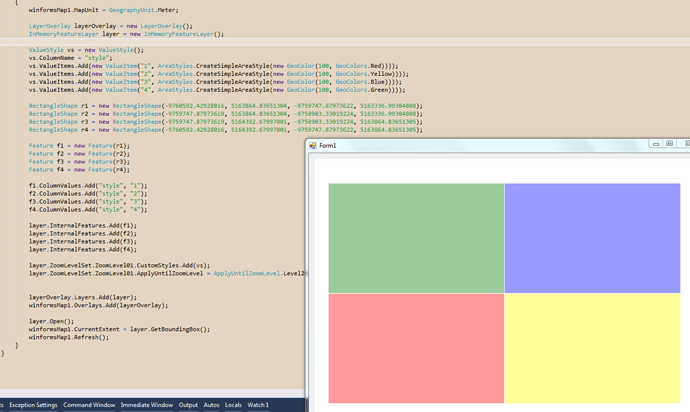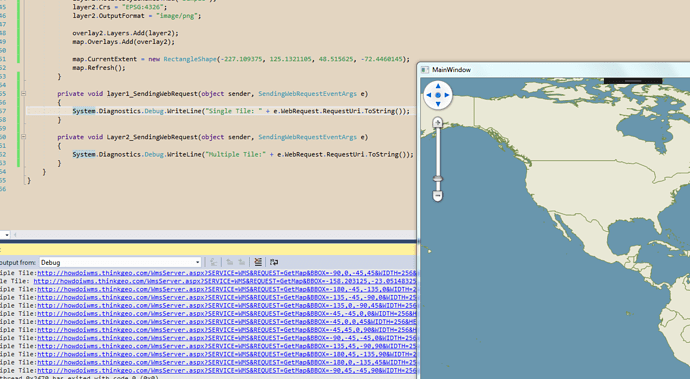hi Ethan,
Setting TileType=Single does indeed result in a single request to the WMS Servers. After seeing it in operation I now understand why there are multiple requests when TileType=MultipleTile. MultipleTile is multi-threaded resulting in multiple requests to the WMS Servers, which allows the rendering to begin immediately and take place a section at a time.
There is a side-effect with TileType=Single, which is that the map does not begin to render immediately. It only renders after the entire extent is composed, which is single-threaded. I much prefer TileType=Single, but it takes 3-4 seconds for the extent to be rendered which is slow to the users.
The WmsRasterLayer is contained within its own LayerOverlay. The remaining local layers are in another LayerOverlay. With the LayerOverlay WmsRasterLayer TileType=Single and the LayerOverlay for remaining layers TileType=MultipleTile the entire rendering is single-threaded. I was hoping that only the LayerOverlay used for WmsRasterLayer would be single-threaded, but that’s not the case.
One of our customers, with only 50% of their workstations in production, generates 300,000 WMS Server requests per day. Once deployment is 100% there may be as many as 500,000 WMS requests per day. This is putting a strain on our third-party WMS Provider.
I’d like to find a solution so that only one WMS Server request is sent with the other LayerOverlay’s rendered by multi-thread. I would like to work with you to find a solution to this dilemma.
At some point I’d like to engage ThinkGeo about how to get better response times for TileType=Single.
Thanks for your help.
Dennis
OriStar Mapping, Inc.


